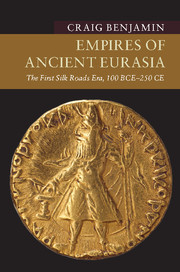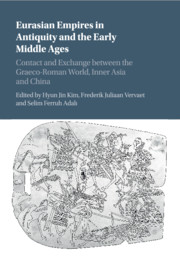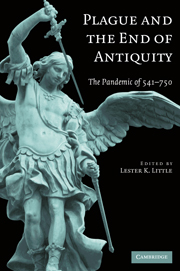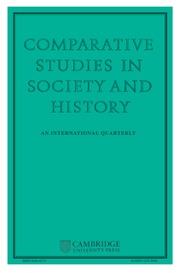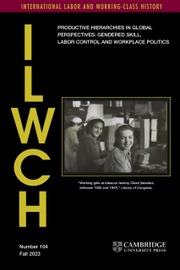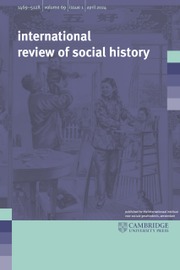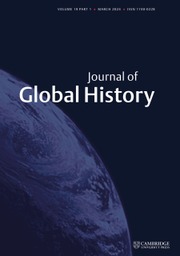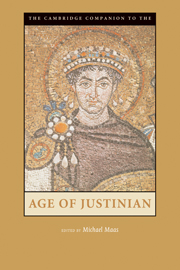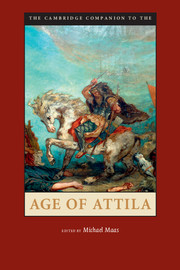Empires and Exchanges in Eurasian Late Antiquity
Empires and Exchanges in Eurasian Late Antiquity offers an integrated picture of Rome, China, Iran, and the Steppes during a formative period of world history. In the half millennium between 250 and 750 CE, settled empires underwent deep structural changes, while various nomadic peoples of the steppes (Huns, Avars, Turks, and others) experienced significant interactions and movements that changed their societies, cultures, and economies. This was a transformational era, a time when Roman, Persian, and Chinese monarchs were mutually aware of court practices, and when Christians and Buddhists criss-crossed the Eurasian lands together with merchants and armies. It was a time of greater circulation of ideas as well as material goods. This volume provides a conceptual frame for locating these developments in the same space and time. Without arguing for uniformity, it illuminates the interconnections and networks that tied countless local cultural expressions to far-reaching inter-regional ones.
- Proposes an integrated view of Eurasia during the period ca.250–750 CE that brings together Rome, China, Iran, and the central steppe lands, allowing readers to gain a fresh approach to a coherent transformational period in world history that has not been discussed within these chronological and geographical parameters before
- Brings together in an innovative way two areas that are the focus of considerable current interest, late antique studies and silk road studies, offering new methodologies for integrated study
- Introduces the concept of 'Eurasian Late Antiquity', which is not based on the centrality of the Roman Mediterranean world, helping readers understand the commonalities, differences, and exchanges over a broad geographic area, including Rome, China, Iran, and the steppe lands between them
Reviews & endorsements
'It is difficult in a brief review to do justice to such a rich variety of contributions, but enough has been said to give a flavor of the riches before us. This is an inspiring book. It establishes Eurasian Late Antiquity as a cohesive area of study at the same time as it demonstrates the sheer excitement of the subject. The editors have done us a great service in bringing together such a thought provoking volume.' Barry Cunliffe, Asian Perspectives
'… Di Cosmo and Maas' volume makes a convincing case for historians and archaeologists to take a Eurasian perspective when studying their particular regions or sites.' Arezou Azad, Medieval Archaeology
Product details
April 2018Adobe eBook Reader
9781108548106
0 pages
39 b/w illus. 9 maps
This ISBN is for an eBook version which is distributed on our behalf by a third party.
Table of Contents
- Part I. Historical Thresholds:
- 1. How the steppes became Byzantine: Rome and the Eurasian Nomads in historical perspective Michael Maas
- 2. The relations between China and the steppe from the Xiongnu to the Türk Empire Nicola Di Cosmo
- 3. Sasanian Iran and the projection of power in Late Antique Eurasia: competing cosmologies and topographies of power Matthew P. Canepa
- 4. Trade and exchanges along the silk and steppe routes in Late Antique Eurasia Richard Lim
- 5. Sogdian merchants and Sogdian culture on the silk road Rong Xinjiang
- 6. 'Charismatic' goods: commerce, diplomacy, and cultural contacts along the silk road in Late Antiquity Peter Brown
- 7. The synthesis of the Tang Dynasty: the culmination of China's contacts and communication with Eurasia Valerie Hansen
- 8. Central Asia in the Late Roman mental map, second to sixth centuries Giusto Traina
- Part II. Movements, Contacts, and Exchanges:
- 9. Genetic history and migrations in Western Eurasia Patrick Geary
- 10. Northern invaders: migration and conquest as scholarly topos in Eurasian history Michael Kulikowski
- 11. Chinese and inner Asian perspectives on the history of the Northern dynasties (386–589 CE) in Chinese historiography Luo Xin
- 12. Xiongnu and Huns: archaeological perspectives on a centuries-old debate about identity and migration Ursula Brosseder
- 13. Ethnicity and empire in the Western Eurasian Steppes Walter Pohl
- 14. The languages of Christianity on the silk roads and the transmission of Mediterranean culture into central Asia Scott Fitzgerald Johnson
- 15. The spread of Buddhist culture to China between the third and seventh century Max Deeg
- 16. The circulation of astrological lore and its political use between the Roman East, Sasanian Iran, Central Asia, and the Türks Frantz Grenet
- 17. Luminous markers: pearls and royal authority in Late Antique Iran and Eurasia Joel Walker
- Part III. Empires, Diplomacy, and Frontiers:
- 18. Byzantium's Eurasian policy in the age of the Türk Empire Mark Whittow
- 19. Sasanian Iran and its northeastern frontier: offense, defense, and diplomatic Daniel T. Potts
- 20. Infrastructures of legitimacy in inner Asia: the Early Türk Empires Michael R. Drompp
- 21. The stateless Nomads of Central Eurasia Peter B. Golden
- 22. Aspects of elite representation among the sixth- to seventh-century Türks Sören Stark
- 23. Patterns of Roman diplomacy with Iran and the steppe peoples Ekaterina Nechaeva
- 24. Collapse of a Eurasian hybrid: the case of the northern Wei Andrew Eisenberg
- 25. Ideological interweaving in Eastern Eurasia: simultaneous kingship and dynastic competition Jonathan Karam Skaff
- 26. Followers and leaders in northeastern Eurasia, ca. seventh to tenth centuries Naomi Standen
- Epilogue Averil Cameron.


